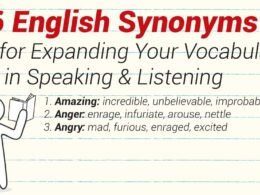B2B marketplaces have been on the rise for over two decades now. During this time, investment flow from venture capitalists has been constant. B2B businesses are reaching impressive capitalizations, and unicorn businesses with valuations over $1bn are sprouting far and wide. For instance, among recent B2B overachievers are Zetwerk, Moglix, G2, and Forto. According to Daniela Coppola from Statista,
“Whether the purchase transaction is finalized online or not, online channels have gained relevance in the B2B customer journey. In the United States, two in three buyers use search engines for product discovery, and half of them browse online marketplaces.”
However, multiple sources, including Statista and McKinsey research, indicate the same crux in the growth of B2B marketplaces – user experience. According to McKinsey:
“Their B2B customers are shifting toward consumer-like purchasing behavior. They’re also demanding a much more sophisticated buying experience and are willing to walk away if they don’t get it.”
At Statista, they estimated that buyer dissatisfaction with user experience was marked as negative by 23.5% of buyers and as somewhat negative by 14.9%.
This is where marketplace app development comes in to drive the growth of B2B marketplaces. After all, almost 40% of users rating the buying experience as below satisfactory is a huge area for improvement and thus, growth. The good news is that there is plenty of expertise in this area and investment in UX often generates immediate returns.
Intro to B2B software marketplaces
B2B software marketplaces are beneficial to every participant in the transaction. Sellers get access to many more buyers. Buyers get to choose from the vast variety of options and even spot newer or different materials to enhance their manufacturing or operations. Automated transactions are cost-efficient for buyers and sellers alike. Then, for the marketplace, transactions generate solid revenues. In addition, since it is a software marketplace, scaling it is a much easier job than a physical business.
However, to understand the issue that is putting the brakes on the growth, it is vital to examine the classification of B2B marketplaces. Marketplace app development often focuses on horizontal or vertical marketplaces, with the first one being industry-agnostic while the second is industry-specific. For instance, a marketplace that sells surgical instruments and hospital equipment sold on Mercateo is a vertical marketplace. An automotive plant or an advertising agency will not be interested in these goods. In addition, shipping cannot be done via generic services, so special transportation is required.
In contrast, a marketplace app development company will have an easier time developing a marketplace that sells office supplies or cleaning services. They are required by a consulting agency, same as by a manufacturing facility. In addition, delivering items can be done by FedEx or UPS. The classification is shown in the picture below.
The other issue that makes B2B software marketplaces so different from generic consumer ones for online marketplace app development is the terms of purchase. When the buyers seek out supplies on a regular basis, they require ways of verifying suppliers and negotiating contracts through the platform. In spot sourcing, the priority is often on fulfilling the immediate operations or manufacturing needs at the lowest price possible. Other pricing options might include bidding and request quote functionality in addition to negotiated contracts and regular price per batch or item.
Tech Stack for Marketplace Software Development
With the above-mentioned requirements, ensuring that the B2B user experience is similar to the consumer shopping experience is a challenge requiring a flexible and fine-grained tech stack. Marketplace app development services cannot rely on templating when it comes to UIs and should always provide custom UI/UX development services. The tech stack is explained in the table below.
| Feature | Technology |
| Complex UIs allowing custom functionality depending on an item, such as configuration of the goods, bulk purchases, compatibility checks, unique specifications, and so on. | No templating is possible, like in consumer marketplaces. Instead, custom UI/UX should be implemented with component-based front-end frameworks such as
|
| A variety of pricing options, workflows to request quotes and vendor approvals | This is often implemented on the backend with microservices and depending on the requirements, the following languages can be utilized:
|
| Integration with buyers’ procurement enterprise systems | This includes adding intermediary layers in the form of custom middleware or integrations with:
|
| Organization and categorization tools for industrial manufacturing materials and components | Advanced navigation and dynamic filtering require:
|
The bright future of B2B software marketplaces and the broader marketplace business model
B2B marketplaces in marketplace app development go beyond simply being places for sellers and buyers to meet. They are transforming into platforms and hubs, integrating with buyer procurement software and being shaped in extension of value-creating supply chains. With advancements in fintech and AI capabilities, B2B software forms ecosystems where a buyer can fulfil needs akin to a consumer shopping on Amazon:
- easy product discovery,
- multiple instant payment options, and
- predictive logistics.
The goal of technology is to make buying a load of raw steel for manufacturing as easy, fast and effortless as buying a pack of paper. Therefore, a broader marketplace business model will reflect systems thinking and represent an ecosystem of services beyond facilitating transactions.










